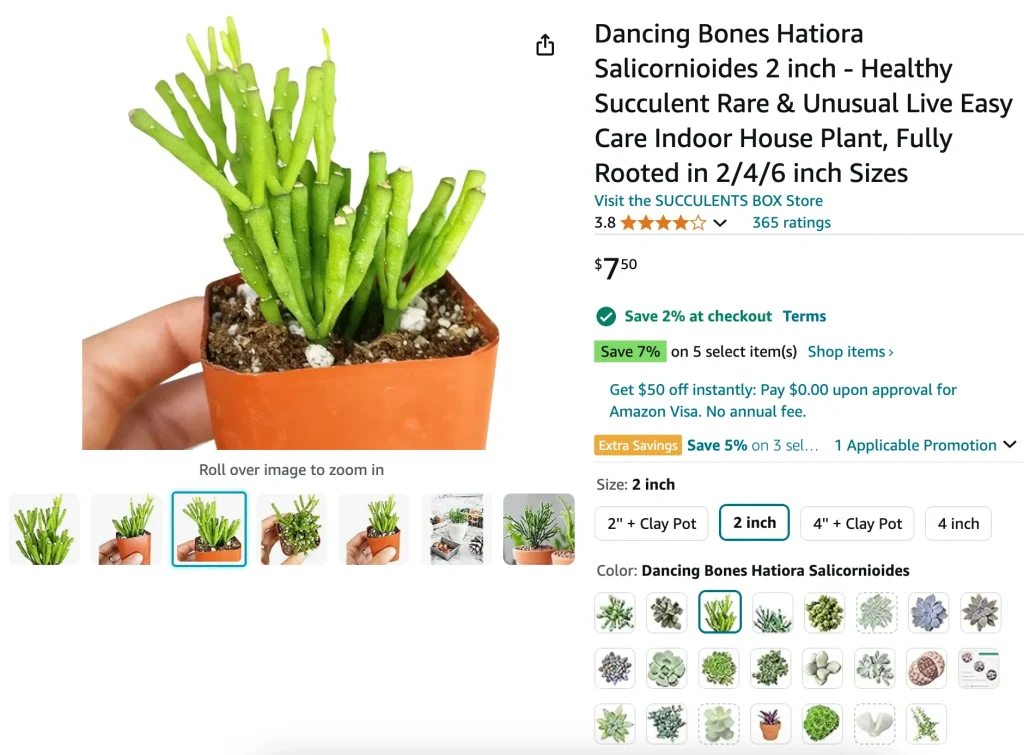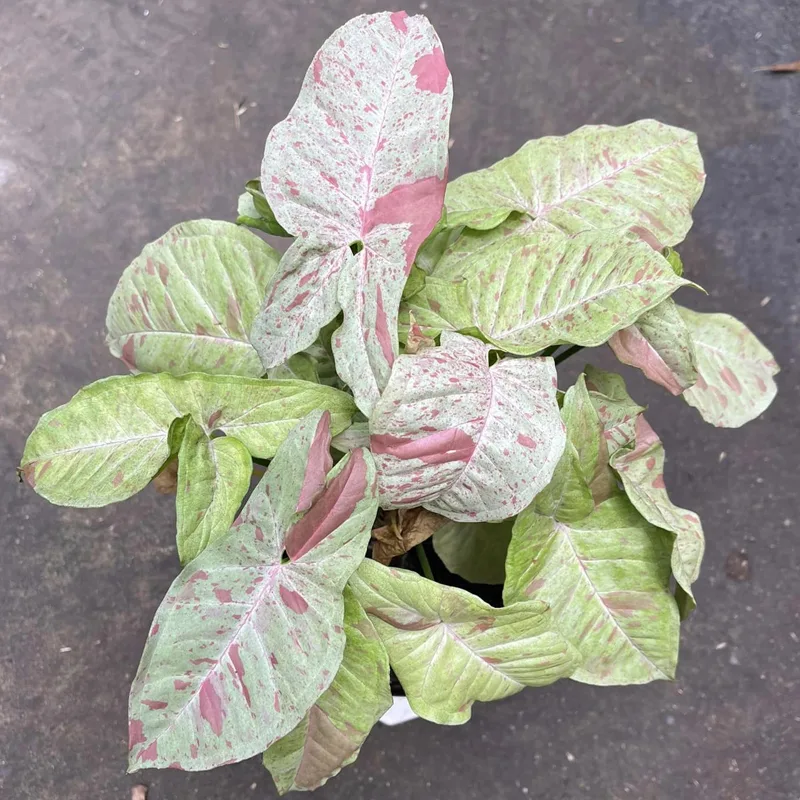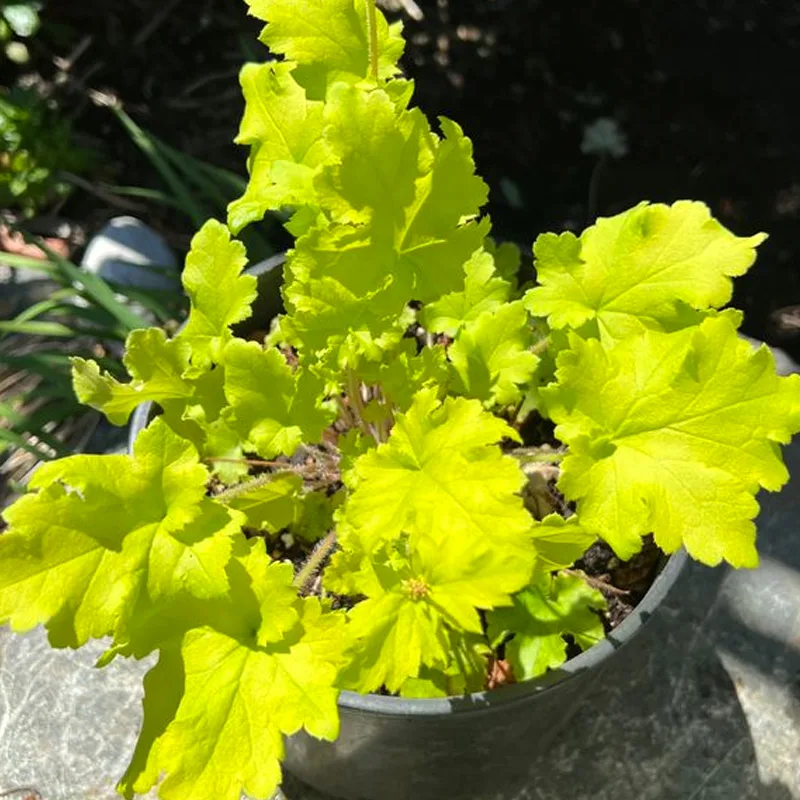
What is Hatiora Salicornioides?
Hatiora Salicornioides, also known as Drunkard’s Dream, is a unique and quirky cactus belong to the Cactaceae family, native to Brazil. Unlike the typical image of a cactus, it has slender, segmented stems that resemble small, bottle-like shapes, giving it its playful nickname. This epiphytic cactus is an excellent choice for those who appreciate unusual plants, and its delicate yellow blooms add a burst of color to any collection.
Plant Family: 161 Genera in Cactaceae
How to Care for Hatiora Salicornioides?
Caring for Hatiora Salicornioides is relatively straightforward, making it a great plant for beginners and seasoned gardeners alike. Here’s how I care for mine:
Light Requirements
Hatiora Salicornioides thrives in bright, indirect light. I place mine near a window where it gets plenty of filtered sunlight. Too much direct sunlight can cause the stems to turn reddish and become sunburned, so I ensure it’s protected from harsh rays.
Watering
Watering Hatiora Salicornioides can be tricky, but once you get the hang of it, it becomes second nature. I water mine thoroughly, allowing the soil to dry out between waterings. During the growing season (spring and summer), I water more frequently, about once a week. In winter, I reduce watering to once every two to three weeks.
Soil
A well-draining soil mix is crucial for Hatiora Salicornioides. I use a cactus or succulent mix, sometimes adding a bit of perlite to ensure good drainage. The plant is epiphytic, meaning it naturally grows on trees in its native habitat, so it doesn’t like to sit in waterlogged soil.
Temperature and Humidity
Hatiora Salicornioides prefers temperatures between 60-80°F (15-27°C). It’s not frost-tolerant, so I bring mine indoors during cold weather. Humidity isn’t a big issue, but it does enjoy a bit of moisture in the air, so I occasionally mist it during particularly dry periods.
How to Propagate Hatiora Salicornioides?
Propagating Hatiora Salicornioides is a simple process that can be quite rewarding. Here’s how I do it:
Step 1: Select a Healthy Stem
I start by selecting a healthy, mature stem from the plant. It’s best to choose a stem with several segments.
Step 2: Let It Callous
After cutting the stem, I let it sit out for a day or two to allow the cut end to callous over. This helps prevent rot when the cutting is planted.
Step 3: Plant the Cutting
Once the end has calloused, I plant the cutting in a small pot filled with a well-draining cactus mix. I water it lightly and place it in a bright, indirect light spot.
Step 4: Wait for Roots to Develop
Within a few weeks, the cutting should start to develop roots. I wait until the plant is well-rooted before moving it to a larger pot or back into my collection.
Hatiora Salicornioides vs Rhipsalis
Hatiora Salicornioides is often confused with Rhipsalis due to their similar growth habits and appearance. However, there are some key differences:
Appearance
While both plants have segmented stems, Hatiora Salicornioides’ segments are more bottle-shaped, giving it a distinctive look. Rhipsalis, on the other hand, tends to have thinner, more elongated segments.
Flowers
The flowers of Hatiora Salicornioides are usually bright yellow and appear at the tips of the segments. Rhipsalis flowers can vary in color but are often white or pinkish and are generally smaller and less showy than Hatiora’s blooms.
Growth Habit
Both plants are epiphytic and grow well in similar conditions, but Hatiora Salicornioides tends to have a more upright growth habit, while Rhipsalis often has a trailing or hanging growth pattern, making it more suited for hanging baskets.
Can You Grow Hatiora Salicornioides Indoors?
Absolutely! Hatiora Salicornioides is an excellent indoor plant. Its compact size and unique appearance make it a perfect choice for a bright windowsill or a spot with indirect sunlight. I find it particularly appealing as an indoor plant because it’s relatively low-maintenance and adds a touch of whimsy to my space.
Is Hatiora Salicornioides Toxic?
One of the great things about Hatiora Salicornioides is that it’s non-toxic to pets and humans. This makes it a safe choice for homes with cats, dogs, or curious children. I can enjoy having this plant in my living space without worrying about any harmful effects.
Common Problems with Hatiora Salicornioides
Like any plant, Hatiora Salicornioides can experience a few issues. Here are some common problems I’ve encountered and how to address them:
Overwatering
Overwatering is the most common problem. If the plant’s stems start to shrivel or turn mushy, it’s likely due to too much water. I reduce watering and check the soil to ensure it’s not too wet.
Pests
While Hatiora Salicornioides is generally pest-resistant, it can occasionally attract mealybugs or spider mites. I treat any infestations with insecticidal soap or neem oil and keep an eye on the plant for any signs of pests.
Root Rot
Root rot can occur if the plant is left in waterlogged soil. To prevent this, I always use well-draining soil and make sure the pot has drainage holes. If root rot does occur, I trim away the affected roots and repot the plant in fresh soil.
What to Plant with Hatiora Salicornioides?
Hatiora Salicornioides pairs well with other cacti and succulents that have similar care requirements. I often plant it alongside Rhipsalis, as they both enjoy the same light and watering conditions. Their contrasting shapes create an interesting visual display.
In summary, Hatiora Salicornioides is a charming, easy-to-care-for cactus that makes a wonderful addition to any plant collection. Whether you’re propagating it, caring for it, or simply enjoying its quirky appearance, this plant is sure to bring a bit of joy to your home.
If i die, water my plants!



